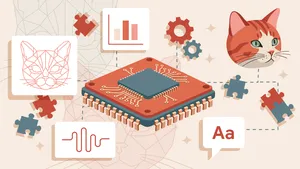Detecting hidden signs of anemia from the eye
Beyond helping us navigate the world, the human eye can reveal signs of underlying disease, which care providers can now uncover during a simple, non-invasive screening (a photograph taken of the back of the eye). We’ve previously shown that deep learning applied to these photos can help identify diabetic eye disease as well as cardiovascular risk factors. Today, we’re sharing how we’re continuing to use deep learning to detect anemia.
Anemia is a major public health problem that affects 1.6 billion people globally, and can cause tiredness, weakness, dizziness and drowsiness. The diagnosis of anemia typically involves a blood test to measure the amount of hemoglobin (a critical protein in your red blood cells that carries oxygen). If your hemoglobin is lower than normal, that indicates anemia. Women during pregnancy are at particularly high risk of anemia with more than 2 in 5 affected, and anemia can also be an early sign of colon cancer in otherwise healthy individuals.
Our findings
In our latest work, "Detection of anemia from retinal fundus images via deep learning" published in “Nature Biomedical Engineering” we find that a deep learning model can quantify hemoglobin using de-identified photographs of the back of the eye and common metadata (e.g. age, self-reported sex) from the UK Biobank, a population-based study. Compared to just using metadata, deep learning improved the detection of anemia (as measured using the AUC), from 74 percent to 88 percent.
To ensure these promising findings were not the result of chance or false correlations, other scientists helped to validate the model—which was initially developed on a dataset of primarily Caucasian ancestry—on a separate dataset from Asia. The performance of the model was similar on both datasets, suggesting the model could be useful in a variety of settings.
Multiple “explanation” techniques suggest that the optic disc is important for detecting anemia from images of the back of the eye.

Because this research uncovered new findings about the effects of anemia on the eye, we wanted to identify which parts of the eye contained signs of anemia. Our analysis revealed that much of the information comes from the optic disc and surrounding blood vessels. The optic disc is where nerves and blood vessels enter and exit the eye, and normally appears much brighter than the surrounding areas on a photograph of the back of the eye.
Key takeaways
This method to non-invasively screen for anemia could add value to existing diabetic eye disease screening programs, or support an anemia screening that would be quicker and easier than a blood test. Additionally, this work is another example of using deep learning with explainable insights to discover new biomedical knowledge, extending our previous work on cardiovascular risk factors, refractive error, and progression of macular degeneration. We hope this will inspire additional research to reveal new scientific insights from existing medical tests, and to help improve early interventions and health outcomes.
To read more about our latest research for improving the diagnosis of eye diseases, visit Nature Communications and Ophthalmology. You can find more research from Google Health team here.






